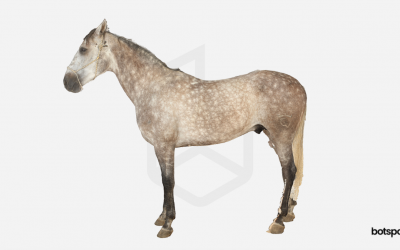3D DIGITIZATION IN THE AUTOMOTIVE INDUSTRY
3D Digitization in the automotive industry: solutions for sustainable vehicle production
Numerous novel mobility concepts that a few years ago were just bold fantasies are either already in use today or on the verge of becoming viable for mass production. There could hardly be a more exciting time for the automotive markets: Traditional companies and new big players are working intensely on rethinking mobility and making it more sustainable and cost-effective at the same time. This commitment to change is the basis for a holistic transformation of this sector towards a future-proof vehicle industry.
The cars of the future are not only interconnected, modular and autonomous, but above all durable. For many people this has always been a key criterion when it comes to buying a vehicle. The lifetime of a car depends on many factors. However, the widespread assumption that old vehicles were built to last forever and new vehicles with their sensitive technical components and fine mechanics tend to wear out much faster is a misconception. Many years of research and development work by automotive manufacturers have led to a substantial optimization of the quality of workmanship and to much more robust vehicles, compared to the standard of earlier years.
Although extended periods of inactivity are not to be recommended either, the greatest amount of wear occurs during intensive use – a cautious driving style as well as regular maintenance and care are a prerequisite for high functionality and retention of value.
Average age of vehicles on the rise
The average age of registered cars in Germany in 2021 was 9.8 years – with an upward trend. This is a result of the increasingly repair-friendly design of new vehicles, which sometimes do not even require any welding work at all if body repair is necessary. In 1995, the average age of passenger cars was just 6.8 years.
It is notable that almost one million cars in Germany now exceed 30 years of age – that’s close to 2 % of all registered cars. In the past, only vehicles used in agriculture and forestry reached that kind of longevity. With increasing age, functionality naturally decreases. For example, according to its report in 2015, German technical supervisory association TÜV had found defects in about one of three cars aged 8-9 years. Defects often occur because components are affected by corrosion, which causes the material to become porous.
Demanding tests and individual optimization
Effective corrosion protection is therefore a key issue for all vehicles. Today, identical cars are on the roads of a wide variety of climatic zones and are often exposed to extreme weather conditions. To ensure that vehicles can withstand these environmental influences in the long run, electrolytic galvanizing of vehicle parts has been used for a long time in addition to various paint systems. During this process, the components are not galvanized in a uniform manner, but rather selectively, depending on the expected level of stress on the element – the most effective way of preventing subsequent oxidation. To obtain valid data as a basis for decision-making on the use of such processes, vehicle manufacturers carry out endurance tests, with continuous inspections of the components. High-quality optical sensor technology is the most convenient solution for recording and documenting the signs of corrosion damage.
3D digitization and 360° photo documentation of vehicle parts.
This is also the current focus of our research and development work: botspot designs highly automated solutions for the detection of damage on the smallest components, but also on entire vehicles. Hardware and software are perfectly coordinated to ensure an effective process. Our solutions automatically capture 360° images with high resolution and maximum definition. In addition, high-precision 3D models with photo-realistic texture can be reconstructed from these images.
Photogrammetric 3D scans of objects with metallic, reflective surfaces traditionally cause major technical problems. While matte surfaces are less complicated for 3D scanning, highly glossy and transparent surfaces tend to cause interferences when calculating the point cloud.
The reason for this irritation is the lack of distinguishing features between the areas detected by the individual sensors. The software must be able to recognize these and to relate them to the corresponding individual sensor; they are essential for accurate 3D reconstruction. Otherwise, the result can be a defective 3D model. After intensive development work, botspot overcame these difficulties and has developed methods for creating highly accurate 3D models of objects even made of metal and other challenging materials.
You would like to use 3D digitizing for your projects or do you have further questions? We will be happy to help you.



